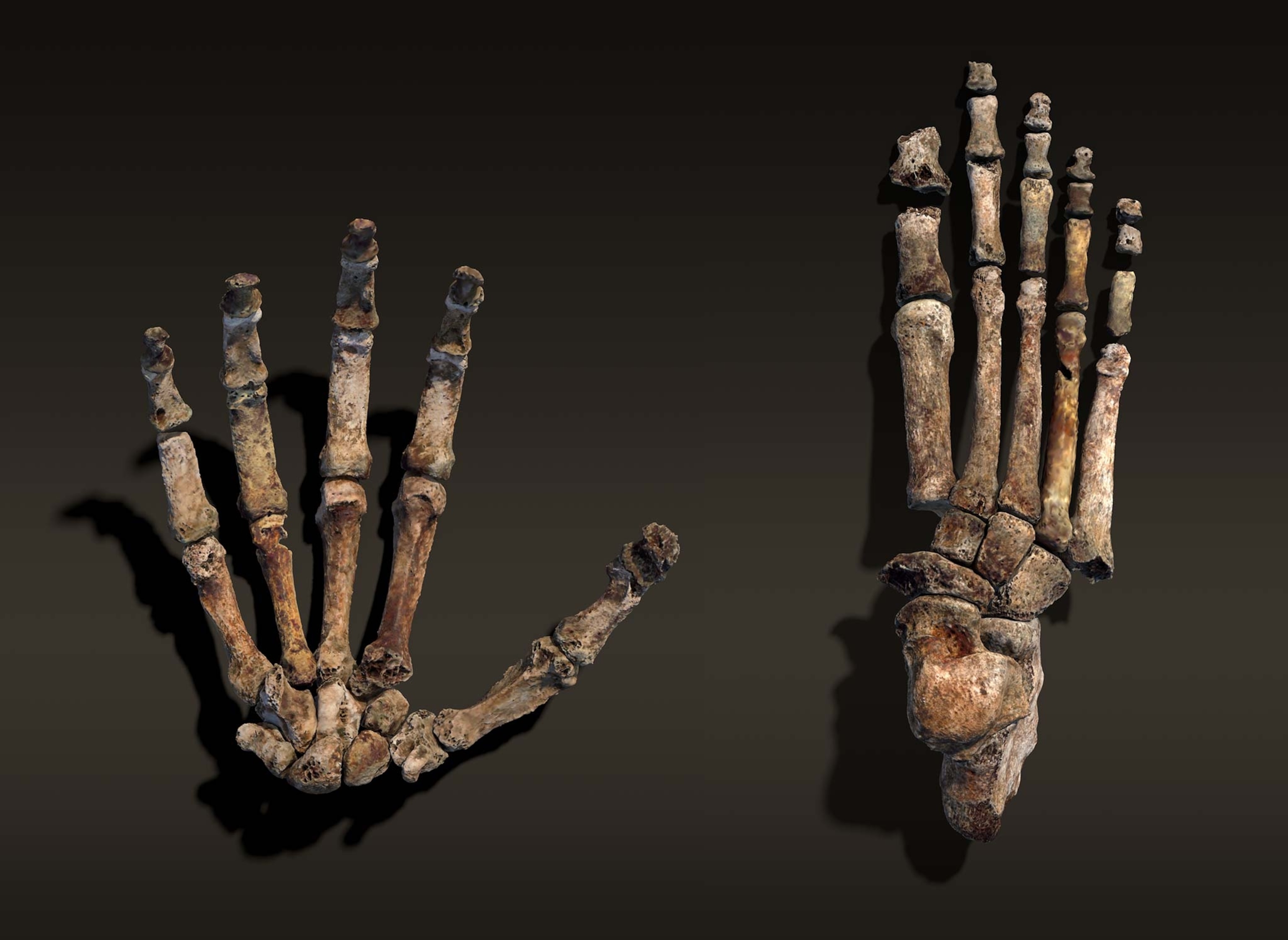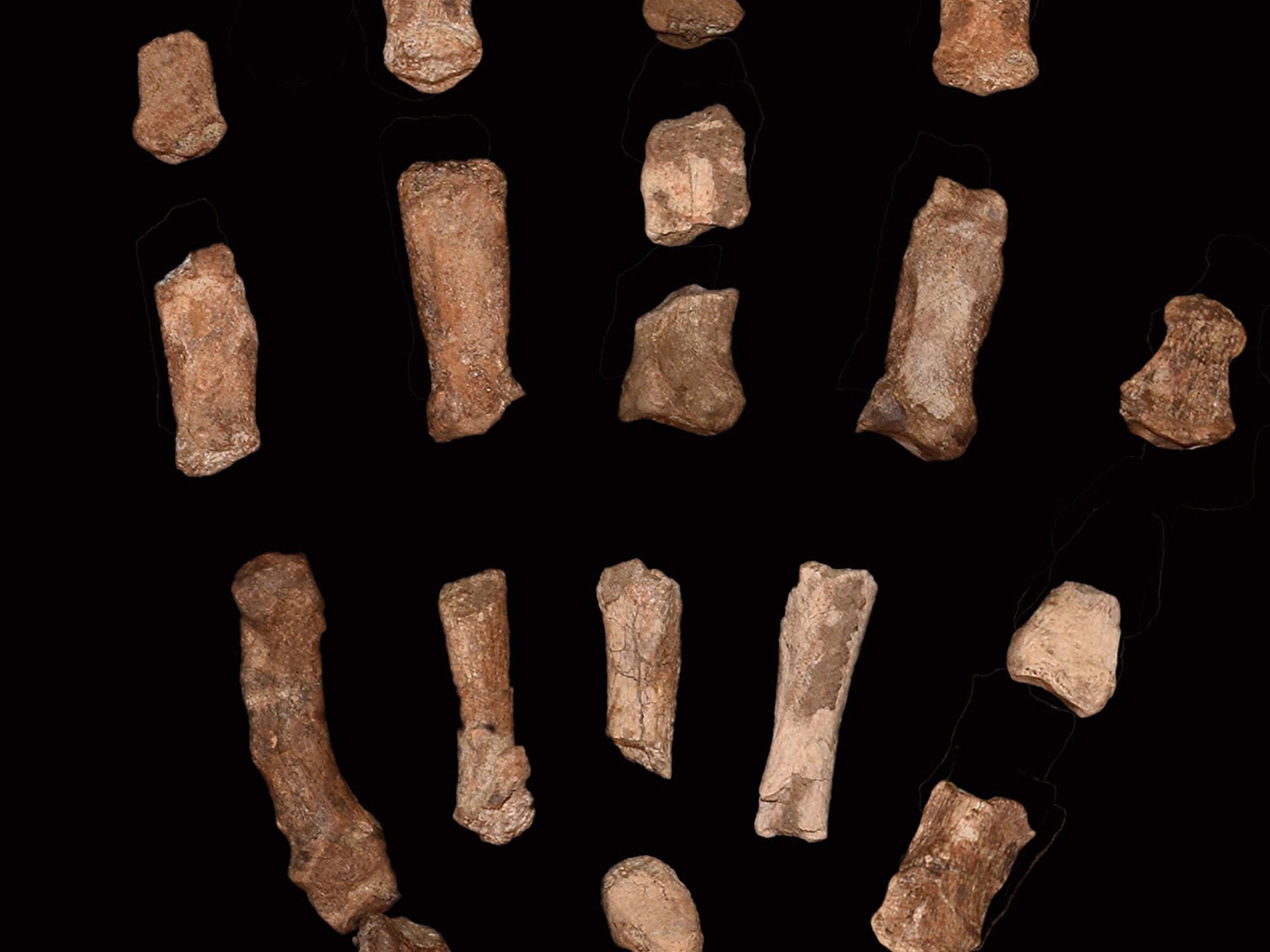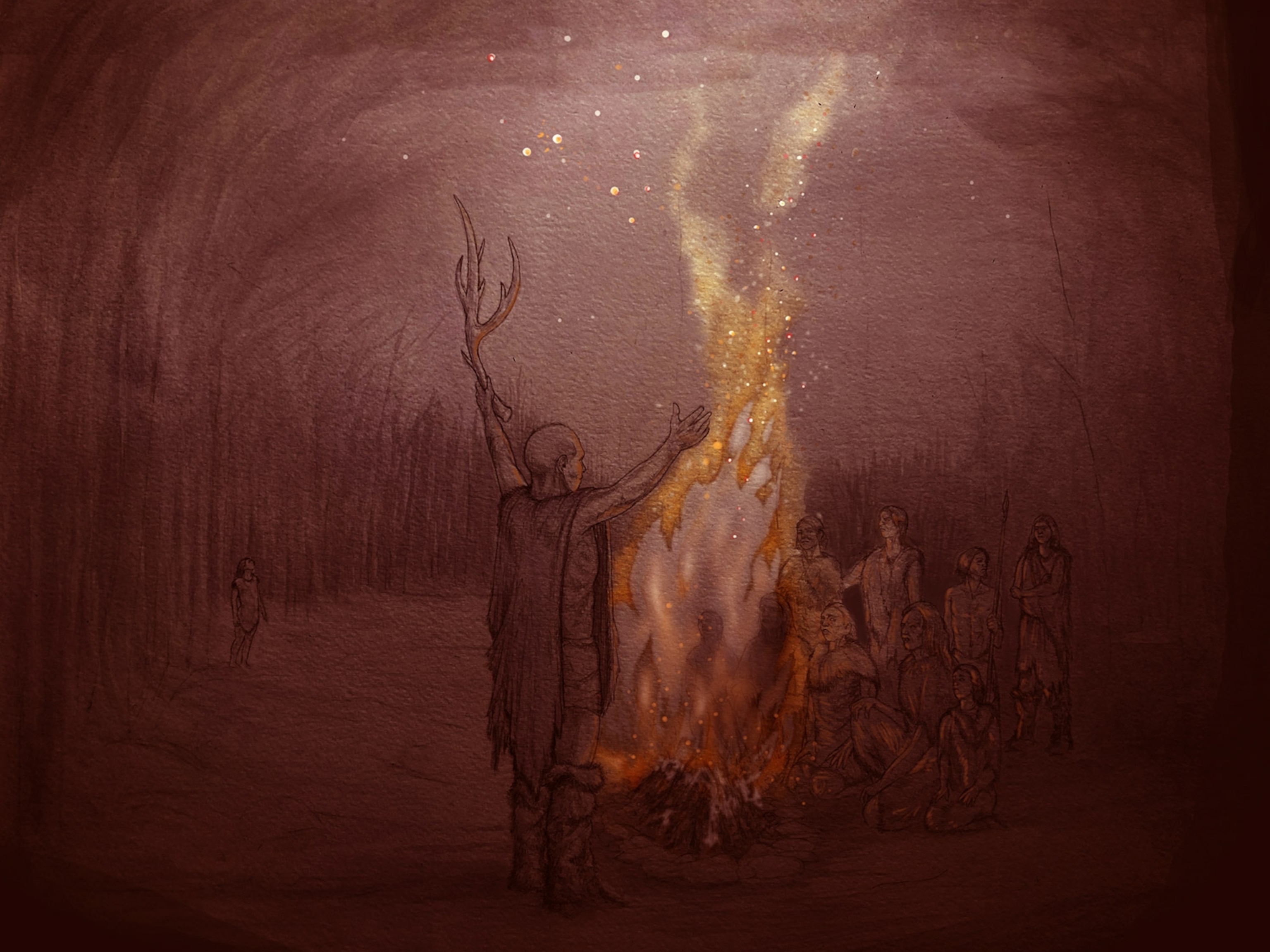
New Human Ancestor Walked Like Us, Climbed Like an Ape
Strong hands and shock-resistant wrists gave the ancient human Homo naledi an advantage over ape cousins.
The mysterious human ancestor called Homo naledi was primed for success in a prehistoric triathlon, new research shows—if the challenges were walking upright, climbing trees, and handily wielding tools.
Based on fossils retrieved from South Africa’s Rising Star cave, two teams reconstructed the locomotor habits of Homo naledi, reported Tuesday in Nature Communications. With funding from National Geographic, one took a close look at 107 foot bones, the other at 26 bones from a nearly complete right hand.
In most respects, the H. naledi foot looks surprisingly like a modern human’s. Its ankle joint, parallel big toe and wide heel bone belong to a striding biped, a creature fully adapted to efficiently walking upright on two legs. But its lower arch and curved toe bones are more ape-like.
The hand, with its curved fingers, indicates that H. naledi were strong climbers—and yet the long, strong thumb and shock-absorbing wrist could also have been capable of manipulating tools (though no tools have been found yet).
It’s a mix of features scientists hadn't seen clearly yet in the genus Homo, to which modern humans belong, particularly when it comes to H. naledi’s pronounced arboreal proclivities.
“H. naledi had a unique form of locomotion for a member of the genus Homo,” says study author William Harcourt-Smith of CUNY’s Lehman College.
Why It Matters
When, in the course of human evolution, did our ancestors climb down from the trees and begin striding across the land?
It’s hard to say. Lucy and other very early human ancestors, known as australopithecines, walked upright at least four million years ago, yet were certainly climbers and may have also been using stone tools.

But evidence for tree-climbing within the Homo lineage is scarce. Scientists suspect that Homo habilis, the "handy man," may have retained climbing abilities around two million years ago—but that view is based on just a few fragmentary fossils. Now, the hands of H. naledi tell us that despite its incredibly modern foot and striding gait, the species also retained ape-like tree-climbing abilities.
For most of human evolution, our ancestors mixed walking and climbing prowess, and this was part of what made them so successful at adapting to change, says Stony Brook University’s Bill Jungers. “H. naledi is no exception.”
The Big Picture
Because the bones from Rising Star have yet to be dated, it’s still not clear where H. naledi fits into the bigger picture of human evolution. Based on its morphology alone, it appears to be near the base of the Homo genus. If H. naledi is that old—around 2 or 2.5 million years—this would mean some features in the hand facilitating tool-use appeared earlier than scientists thought, says study author Tracy Kivell of the University of Kent.
If, on the other hand, H. naledi ends up being relatively perhaps 100,000 years old—then primitive characteristics, like curved fingers, were retained (or developed independently) in a hominin that co-existed with modern humans. “Both scenarios are very interesting,” Kivell says.
Follow Nadia Drake on Twitter and read her National Geographic Phenomena blog.





